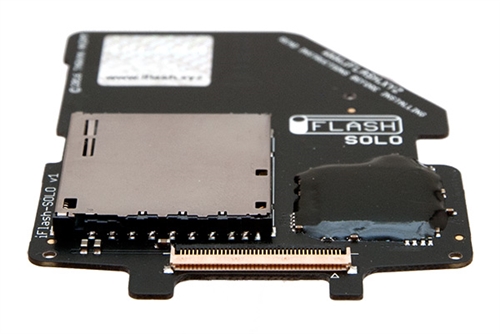
I turned the iRiver on without closing everything up to make sure it worked. I removed the iRiver's drive carefully, and plugged the iFlash setup in. I disconnected both, and opened up the iRiver. The stock firmware will run into library limitations apparently.I haven't confirmed this personally) into my computer, and copied over all (the Rockbox folders included) its files on its hard drive over to the newly formatted iFlash drive. I plugged my already Rockboxed iRiver H320 ( Note: you need to make sure you are using Rockbox. Using a drive formatter, I deleted all partitions and formatted the drive to FAT32. That doesn't matter, you don't need to close it up, you just need the interface. Note: the iFlash is too big for the enclosure I got. I popped my microSD cards into the iFlash Adaptor, added the 4th Gen iPod adaptor and put it into the hard drive enclosure. These are cheap-ish and fairly easily found on eBay and Amazon. I ordered a hard drive enclosure that would work with the 4th Gen iPod interface as well. The interface is the same as the one required by the iRiver H320. I ordered the iFlash adaptor for using the iFlash with 4th Gen iPods. Any one of their offerings should work though (the SD version, the CF version, etc, etc.) I ordered the iFlash Quad MicroSD adaptor for iPods. I took it upon myself to figure out something using readily available parts that should be available for a long time to come. I purchased a mint condition H320 on eBay, but knew I would soon be frustrated by the hard drive, both its limited size and the fact that it isn't solid state.I did a little research and found it surprisingly hard to get a consistently used method of upgrading these players. I decided to explore vintage players and after a while started looking at the iRiver H320 and the H340. Sound quality, UI issues, and excessive pricing were frustrating me, and I don't like using my phone as a DAP (battery life, sound quality, etc, etc.). IPod is now ready to restore & sync using iTunes.I was recently looking for a DAP alternative to the current offerings out there. 
Slide battery cable in to the connector and push down the black latch to lock the ribbon in place. Fold the piece in half for thick case back iPods. Remove the protective outer sheets from the thermal gap filler before placing on top of the mSata drive. Insert the mSata drive fully in to the connector at an angle, then gently push down till it locks on the iFlash-Sata.
#IFLASH ADAPTER INSTALL#
Install iFlash-Sata board in to iPod, Make sure ribbon is fully home and the black bar is locked down.

iPod is ready to accept the iFlash board.

Remove all rubber bumpers and strips from the iPods if any remain after the HDD is removed. Gently lift the black bar to release the ribbon from the HDD. Rest the front and back side by side, be careful to not cause too much stress on the headphone ribbon.īefore pulling the case apart, release the battery cable – lift the black lock bar -or- gently using even pressure pull up the battery ribbon away from the connector. I suggest watching some iPod opening videos on the internet. Using suitable tools, release the holding clips, making your way around the case till it opens.







 0 kommentar(er)
0 kommentar(er)
